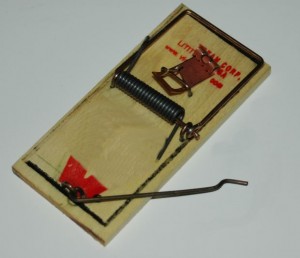 While they may look cute and innocent, mice infestations in the home is a serious health hazard. They’ll chew threw electrical wiring, get into food, bring unwanted pests like ticks and fleas, and they’ll defecate and urinate wherever they reside. Whether you have mice living in your attic or someone on the ‘ground’ floor, you must action immediately to keep their numbers in check. Unfortunately, however, far too many homeowners make some pretty common mistakes when treating mice infestations. In this post, we’re going to take a look at some of the most common mistakes and why you should avoid them.
While they may look cute and innocent, mice infestations in the home is a serious health hazard. They’ll chew threw electrical wiring, get into food, bring unwanted pests like ticks and fleas, and they’ll defecate and urinate wherever they reside. Whether you have mice living in your attic or someone on the ‘ground’ floor, you must action immediately to keep their numbers in check. Unfortunately, however, far too many homeowners make some pretty common mistakes when treating mice infestations. In this post, we’re going to take a look at some of the most common mistakes and why you should avoid them.
Mistake #1) Using Poison Bait
One of the biggest mistakes homeowners make when treating mice infestations is using poison bait. Although this may prove effective at killing at least some of the mice inhabiting your home, it’s not a long-term solution. And to make matters worse, there’s a good chance that a mouse will consume some of the poison before finding his way behind a wall. A couple days later, you and your family may notice a strong, unpleasant odor coming from behind the wall.
Mistake #2) Using Glue Traps
Glue traps are also an ineffective way to treat mice infestations in the home. You can scatter them throughout the attic or anywhere else where there’s mouse ‘activity,’ but they’ll probably just drag it around before breaking free. Unless you want to spend and hour or longer trying to hunt down all of the glue traps tossed around by your furry little friends, it’s recommended that you avoid using them.
The most effective solution for mice infestations is snap traps, as they’re cheap, easy-to-use, and humane. You can place a small block of cheese, piece of chocolate, or even a dab of peanut butter to lure them in. Mice, rats and other rodents LOVE these savory treats, so it’s bound to attract them.
Mistake #3) Not Closing Off Entry
A third mistake that we’re going to talk about is not closing off the entryway. You can fill your attic and home with dozens of mousetraps, but it’s only going to act as a temporary solution until you actually find where they mice are entering and close it off. Of course, this is easier said than done when a standard field mouse can fit through an opening the size of a dime. In order to prevent mice from coming back, though, you must find where they are entering and close it off.